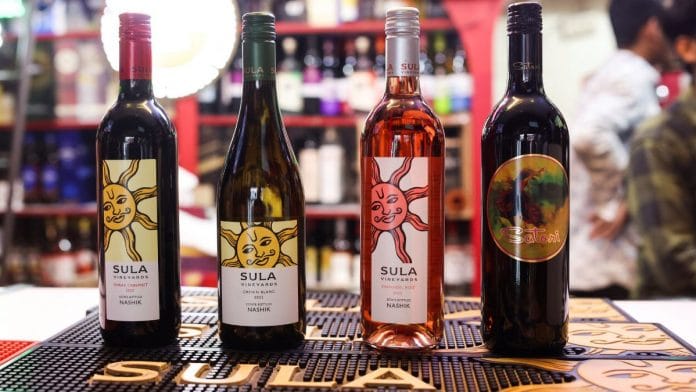Thank you dear subscribers, we are overwhelmed with your response.
In a country predominantly known for its beer and spirits, Sula Vineyards has defied the odds and established itself as a powerhouse in India’s burgeoning wine industry. With its recent successful Initial Public Offering (IPO), Sula now finds itself not only as India’s premier wine producer but also as a significant player in the country’s capital markets. It is a testament to the company’s savvy and tenacity that they have managed to carve out a space in an industry that is in its nascent stages in India. However, this success story has certain implications that are worth examining closely.
At present, Sula commands a market share of nearly 52% in India, a dominance seldom seen in other markets globally. This disproportionate market power, coupled with India’s steep tariffs on foreign wine imports, paints a picture of a market with little competition and raises serious questions about its future development. Looking at the Indian wine industry today, one cannot help but be reminded of a similar narrative that unfolded in India’s auto sector in the mid to late 20th century. Just as Hindustan Motors’ Ambassador and Premier Automobiles’ Padmini reigned supreme in an era of high tariffs and little competition, we see Sula wines today dominating the wine industry, with a similar lack of competition due to prohibitive import duties. While the Ambassador and Padmini had a certain nostalgic charm, their designs and technologies were a generation behind what was available in international markets. Similarly, while Sula and other domestic vineyards are making strides in viticulture and wine production, the reality is that they’re not subjected to the same quality pressures as their international counterparts due to the high tariffs keeping out foreign competition
Wine import duties in India are exceedingly high, in some cases reaching a staggering 150%, effectively dissuading foreign wine producers from accessing the Indian market. This protective barrier shields local producers, like Sula, from the fierce competition seen in other global wine markets, arguably, and ironically, leading to a “market for lemons.”
Coined by economist George Akerlof, a market for lemons signifies a situation where lower-quality products dominate due to information asymmetry and lack of competition. In India’s wine industry, the hefty tariffs effectively limit consumer exposure to foreign wines, which generally tend to be of superior quality due to more mature winemaking practices and terroir advantages. As a result, Indian winemakers may feel less incentivized to focus on improving the quality of their wines, as they enjoy a captive market.
This can result in a classic case of market failure — a situation where the allocation of goods and services by a free market is not efficient. Without the necessary competition to spur innovation and quality improvement, domestic producers may get away with providing sub-par products. This not only hinders the growth of the industry but also deprives consumers of better choices and experiences.
To make matters more complex, the wine industry is unique in that a single producer’s reputation can impact the entire industry’s image. A few bottles of substandard wine can create a long-lasting negative perception about the overall quality of Indian wine, thereby hampering the prospects of other local winemakers who might be striving to improve their craft.
Addressing this requires policy changes that can stimulate competition and encourage quality enhancement. A gradual reduction in import duties, for instance, could be a starting point, inviting international producers to compete on a level playing field with domestic producers. This move, while likely to be opposed by local producers in the short term, will ultimately encourage them to step up their game and align with global standards.
Increased competition, induced not only by low import tariffs but also policies that lower barriers to entry domestically, would diversify the market, providing consumers with a wider range of choices and more information about different wine styles and quality levels. It’s a win-win for consumers and producers who are genuinely passionate about enhancing India’s standing in the global wine industry.
That being said, Sula’s success story should not be viewed negatively. On the contrary, it’s a testament to the company’s resilience and adaptability. However, for the broader wine industry to thrive and for consumers to enjoy a diverse range of high-quality wines, India must evolve from its current protective stance. More competition will only enhance the industry, leading to a higher bar for quality, innovation, and consumer satisfaction. And that’s something we can all raise a glass to.
These pieces are being published as they have been received – they have not been edited/fact-checked by ThePrint.


